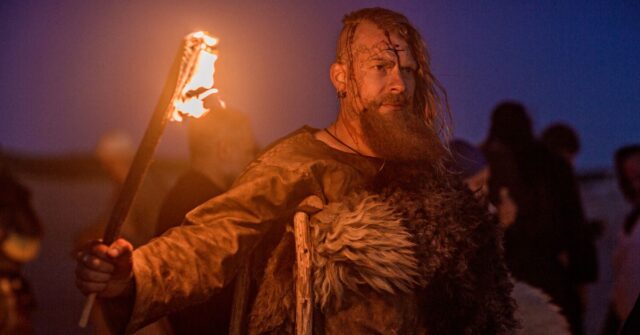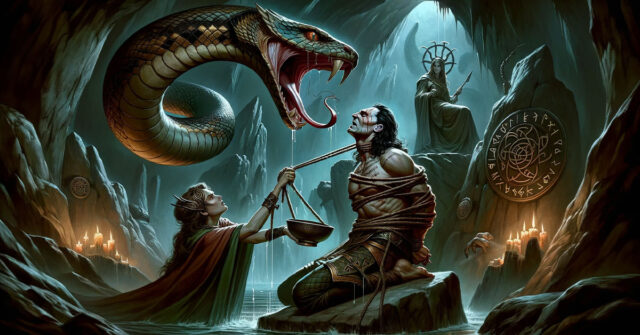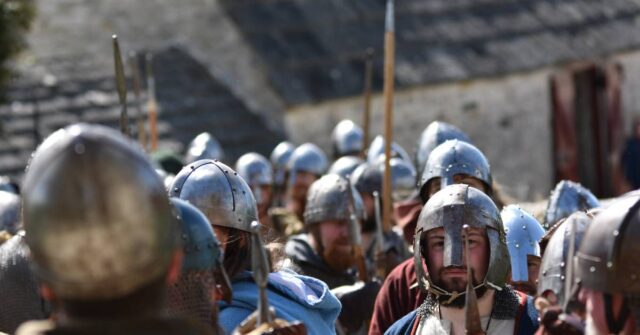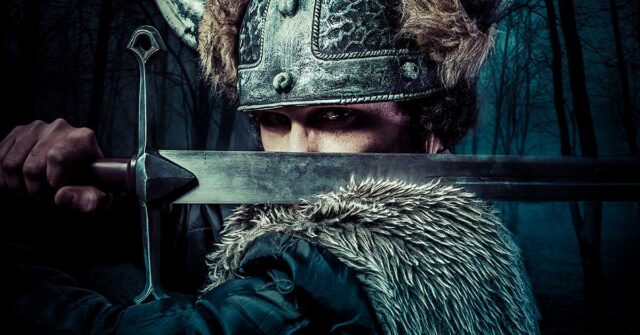Introduction to Norse Mythology
Norse mythology, originating in the ancient Nordic cultures, is a collection of myths and legends that reflect the beliefs, values, and worldviews of these societies.
This complex and multifaceted mythology explores the relationships between gods, giants, and humans while addressing themes of heroism, fate, and the cosmic struggle between order and chaos.
Origins and Historical Context
Norse mythology, originating from the ancient pre-Christian beliefs of the Scandinavian people, encompasses an incredibly rich and vibrant collection of tales, legends, and myths.
These stories, which celebrate gods, heroes, and fantastical creatures, provide a glimpse into the cultural and religious life of the Vikings and their ancestors.
They also offer a deeper understanding of the values, fears, and aspirations that shaped this fascinating society.

Primary Sources
The primary sources of Norse mythology are a collection of Old Norse literature, including the Poetic Edda, the Prose Edda, and various sagas.
These texts, written by medieval scholars and poets, provide invaluable insight into the myths, legends, and beliefs of the ancient Scandinavians.
The Poetic Edda
One of the most important sources of Norse mythology is the Poetic Edda, a collection of ancient poems written in Old Norse.
These poems include some of the most famous and beloved stories from the Norse tradition, such as the tale of Thor’s journey to the land of the giants and the story of the tragic death of the god Balder.
The Prose Edda
The Prose Edda, written by the Icelandic historian Snorri Sturluson in the 13th century, is another key source of Norse mythology.
This work is both a guide to understanding the complex world of the Norse gods and a treasury of mythological tales. Snorri’s goal was to preserve the ancient poetic tradition and provide a comprehensive overview of Norse mythology for future generations.
Sagas and Other Texts
In addition to the Eddas, there are numerous sagas, chronicles, and other texts that contain valuable information about Norse mythology.
These works, written by various authors and preserved in manuscripts, often combine historical events with mythological elements, offering a unique perspective on the beliefs and values of the time.
Cosmology and Mythological Worlds
In Norse mythology, the cosmos is structured as a collection of nine interconnected realms, each inhabited by distinct beings, such as gods, giants, and humans.
These realms are connected by Yggdrasil, the great world tree, which serves as the backbone of Norse cosmology.
Yggdrasil: The World Tree
At the center of Norse cosmology stands Yggdrasil, the immense World Tree, whose branches and roots connect the various realms of existence.
This ash tree is a symbol of life, death, and rebirth, and it plays a crucial role in many Norse myths. Yggdrasil supports the weight of the Nine Realms, and its roots reach deep into the wellsprings of wisdom and fate.
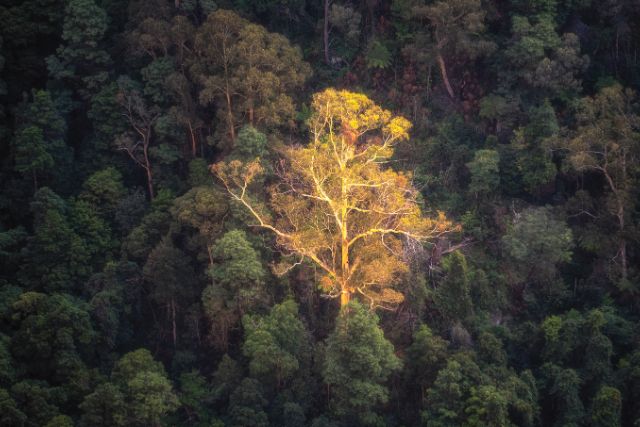
The Nine Realms
Central to Norse cosmology is the Nine Realms, a collection of distinct worlds inhabited by various beings such as gods, giants, and humans.
These realms are interconnected by Yggdrasil, the great world tree, which serves as a cosmic axis and provides structure to the Norse universe.
The Nine Realms play an essential role in Norse mythology, as they provide the setting for many of the myths and legends that define the pantheon.
Asgard: Realm of the Aesir
Asgard, the home of the Aesir gods, is a magnificent realm where the gods live in great halls and feast together. Odin, the Allfather, rules over Asgard from his throne, Hlidskjalf, where he can observe all the realms.
Asgard is connected to Midgard, the realm of humans, by the Bifrost, a shimmering rainbow bridge guarded by the god Heimdall.
Vanaheim: Realm of the Vanir
Vanaheim, the realm of the Vanir gods, is known for its lush landscapes and abundant resources. The Vanir, who is associated with fertility, prosperity, and nature, have a more peaceful disposition than the warlike Aesir.
After the Aesir-Vanir War, some of the Vanir, such as Freyja and Freyr, made their homes in Asgard and formed a lasting alliance with the Aesir.
Midgard: Realm of the Humans
Midgard, or Middle Earth, is the realm inhabited by humans. Surrounded by a vast ocean, this realm is encircled by the great serpent Jormungandr, whose massive body forms a protective barrier.
Midgard is a place of both beauty and danger, where humans must contend with the harsh elements and the threat of giants and other mythological creatures.
Jotunheim: Realm of the Giants
Jotunheim, the land of the giants, is a rugged and inhospitable realm, characterized by towering mountains and dense forests.
The giants, or Jotnar, are often depicted as adversaries of the gods, but they are also closely related to them in various ways, including through marriage and kinship.
Some giants, such as the wise Mimir, are highly respected for their knowledge and wisdom.
Niflheim: Realm of Mist and Ice
Niflheim, the primordial realm of ice and mist, lies in the far north of the Norse cosmos. It is a frozen wasteland inhabited by frost giants and other chilling creatures.
In the depths of Niflheim, Hvergelmir, a bubbling wellspring and the origin of all rivers, can be found. This well is one of the three roots of Yggdrasil, and it is guarded by the dragon Nidhogg.
Muspelheim: Realm of Fire
Muspelheim, the primordial realm of fire, is located in the far south and is ruled by the fire giant Surt. This fiery domain is inhabited by fierce and destructive creatures that will play a significant role in the apocalyptic events of Ragnarok.
The union of Muspelheim’s fire and Niflheim’s ice gave birth to the first beings in Norse mythology.
Alfheim: Realm of the Light Elves
Alfheim, the home of the light elves, is a beautiful and enchanting realm where the sun always shines. The light elves, who are associated with nature, magic, and beauty, are often considered benevolent beings.
Freyr, the Vanir god of fertility and abundance, rules over Alfheim and is closely connected to the light elves.
Svartalfheim: Realm of the Dark Elves and Dwarves
Svartalfheim, the realm of the dark elves and dwarves, is a subterranean world of caverns and mines. The dark elves, also known as dökkálfar, are mysterious and elusive creatures, while the dwarves are renowned for their incredible craftsmanship and skill in forging powerful weapons and artifacts.
Helheim: Realm of the Dead
Helheim, the realm of the dead, is a dark and gloomy place ruled by the goddess Hel. The souls of those who die from illness, old age, or other natural causes are sent to Helheim, where they reside for eternity.
In contrast, the souls of warriors who die in battle are chosen by the valkyries to join Odin in Valhalla or Freyja in her hall, Sessrumnir.
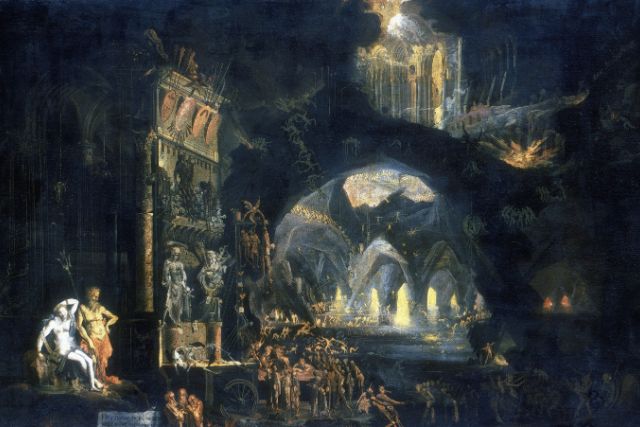
Major Gods and Goddesses
In the Norse pantheon, there are two main groups of gods and goddesses: the Aesir, associated with war and power, and the Vanir, linked with fertility and prosperity.
These deities rule over various aspects of life and the cosmos, and their adventures, rivalries, and relationships form the core of Norse mythology.
Aesir: The Warrior Gods
The Aesir are the principal gods of the Norse pantheon, often depicted as great warriors and rulers. The most prominent among them are Odin, the wise and powerful king of the gods, and Thor, the mighty god of thunder.
The stories of the Aesir explore themes of heroism, wisdom, and the struggle to maintain order in the cosmos.
Odin: The Allfather
Odin, the Allfather and chief of the Aesir gods, is a complex and multifaceted deity. He is the god of wisdom, poetry, war, and death.
Odin is known for his relentless quest for knowledge, sacrificing one of his eyes in exchange for a drink from the Well of Wisdom. He also hung himself from Yggdrasil, pierced by his own spear, to gain the knowledge of runes.
Odin is accompanied by his two ravens, Huginn and Muninn, who bring him news from all over the world.
Thor: God of Thunder
Thor, the god of thunder and protector of mankind, is one of the most popular and powerful gods in Norse mythology. He wields the mighty hammer Mjolnir, which can level mountains and slay giants.
Thor is a fierce warrior but also possesses a strong sense of justice and loyalty. His exploits are the subject of many legendary tales, including his battles against the giants and his adventures in the land of the giants, Utgard.
Tyr: God of War
Tyr, the god of war and justice, is a courageous and honorable deity who values order and the rule of law. Known for his exceptional bravery, Tyr sacrificed his hand to bind the monstrous wolf Fenrir, ensuring the safety of the gods and the world.
Tyr is also associated with the Thing, an assembly where disputes were settled and laws were established in Norse society.
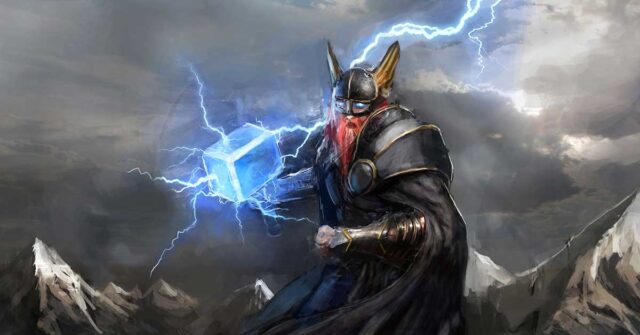
Balder: God of Light and Beauty
Balder, the beloved son of Odin and Frigg, is the god of light, beauty, and purity. He is revered for his kindness, wisdom, and fairness.
However, Balder’s tragic death at the hands of his blind brother Hod, orchestrated by the trickster Loki, sets in motion a series of events leading to the cataclysmic battle of Ragnarok.
Heimdall: Guardian of the Bifrost
Heimdall, the watchman of the gods, stands guard at the Bifrost, the rainbow bridge connecting Asgard and Midgard.
He possesses extraordinary senses, including the ability to hear the grass grow and see a hundred miles away. Heimdall is destined to sound his horn, Gjallarhorn, to signal the beginning of Ragnarok, the final battle between the gods and the giants.
Vanir: The Fertility Gods
The Vanir are a group of gods associated with fertility, nature, and prosperity. Despite being less prominent than the Aesir, the Vanir play a significant role in Norse mythology, especially in the realms of agriculture and human fertility
Key Vanir gods include Freyja, the goddess of love and beauty, and her brother Freyr, the god of fertility and prosperity.
Freyja: Goddess of Love and Fertility
Freyja, the beautiful goddess of love, fertility, and war, is a prominent figure in Norse mythology. She is associated with wealth, abundance, and magic, and she rides a chariot drawn by cats.
Freyja is also the leader of the valkyries, selecting half of the warriors who die in battle to join her in her hall, Sessrumnir, while the other half go to Odin’s Valhalla.
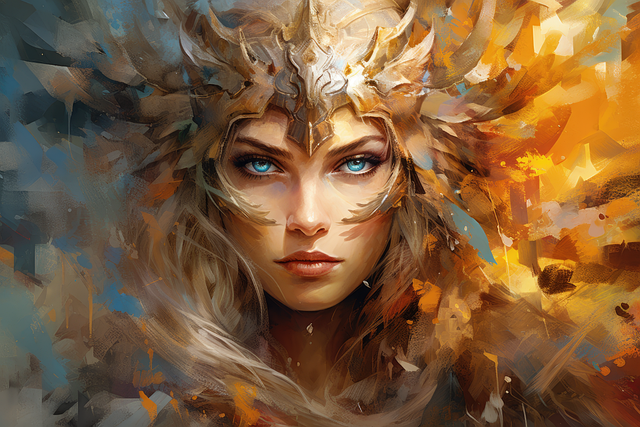
Freyr: God of Prosperity and Abundance
Freyr, the brother of Freyja and the god of fertility, abundance, and peace, is a generous and benevolent deity. He is associated with good harvests, bountiful rains, and the blessings of the earth.
Freyr possesses a magical ship, Skidbladnir, which can be folded like a cloth, and a golden boar named Gullinbursti that can travel through the air and over water.
Freyr is also known for his tragic love for the beautiful giantess Gerðr, whom he eventually marries.
Njord: God of the Sea
Njord, the god of the sea, wind, and wealth, is a revered figure in Norse mythology. As a Vanir god, he is associated with prosperity and abundance, especially for sailors and fishermen who relied on the sea’s bounty.
Njord is the father of Freyja and Freyr and is married to the giantess Skadi, though their union is marked by discord due to their incompatible preferences for the sea and the mountains, respectively.
Mythical Creatures and Beings
Norse mythology teems with a diverse array of mythical creatures and beings, each with its own unique characteristics, abilities, and role in the mythological narrative.
Giants, dwarves, elves, and dragons are just a few of the many beings that populate the tales of Norse mythology, creating a rich and vivid world filled with wonder, adventure, and danger.
Giants
The giants, or Jotnar, are a race of powerful beings who often come into conflict with the gods. Despite their adversarial relationship with the Aesir, giants are not inherently evil, and many of them possess the wisdom and knowledge that the gods seek.
Giants are also closely related to the gods, with several gods having giant parentage or marrying giants.
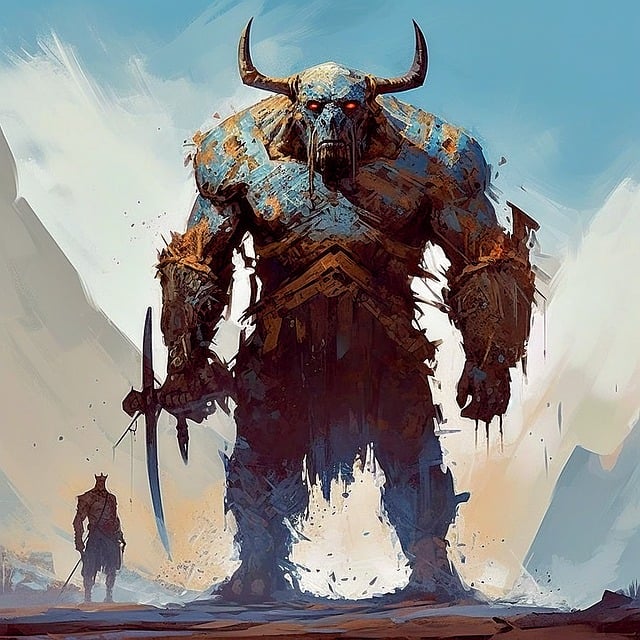
Dwarves
Dwarves, who are skilled craftsmen, and metalworkers are responsible for creating some of the most iconic artifacts in Norse mythology, such as Thor’s hammer Mjolnir, Odin’s spear Gungnir, and the magical gold ring Draupnir.
Dwarves live underground in Svartalfheim and are known for their cunning and resourcefulness.
Elves
Elves are supernatural beings that inhabit the realms of Alfheim and Svartalfheim. The light elves of Alfheim are associated with beauty, nature, and magic, while the dark elves, or dökkálfar, are more elusive and mysterious.
Elves are often considered powerful and wise beings who can bestow blessings or curses upon humans.
Dragons
Dragons in Norse mythology are fearsome creatures that often serve as antagonists in various tales. The most notable dragon in Norse mythology is Nidhogg, the monstrous creature that gnaws at the roots of Yggdrasil and feasts on the dead in Niflheim.
Other dragons include Fafnir, a dwarf transformed into a dragon by greed, and Jormungandr, the colossal sea serpent that encircles Midgard.
Creation and Destruction: Norse Cosmogony and Ragnarok
At the heart of Norse mythology lies the story of creation and destruction, encompassing the birth of the cosmos, the adventures of the gods, and the prophesied end of the world, known as Ragnarok.
This cycle of creation and destruction explores the themes of fate, renewal, and the eternal struggle between order and chaos.
The Creation of the Cosmos
The Norse creation myth tells the story of the birth of the cosmos from the collision of the primordial realms of fire, Muspelheim, and ice, Niflheim. In the void between these realms, the frost giant Ymir and the cosmic cow Audhumla emerged.
The gods, Odin and his brothers Vili and Ve slew Ymir and used his body to create the world, forming the sky, land, and seas.
Ragnarok: The Twilight of the Gods
Ragnarok, the prophesized cataclysmic event, marks the end of the world and the death of the gods. This apocalyptic battle will be fought between the gods, led by Odin, and the forces of chaos, led by the fire giant Surt and the monstrous wolf Fenrir.
Following the destruction of the world, a new and idyllic earth will rise from the ashes, and a new generation of gods, including Balder, who will be resurrected, will inherit the legacy of their predecessors.
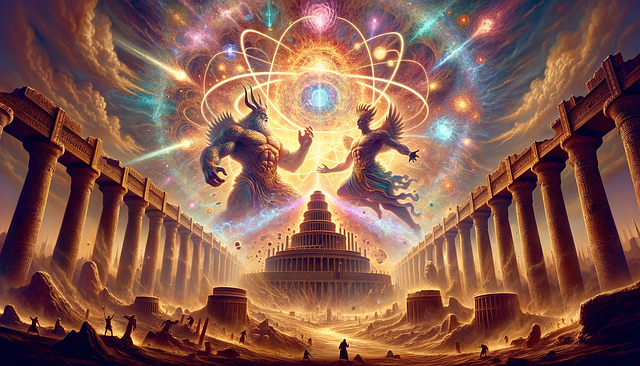
Signs of Ragnarok
Several signs will herald the arrival of Ragnarok, including the Fimbulwinter, a devastating three-year-long winter, and the breaking of the golden fetters that bind the monstrous wolf Fenrir.
The giantess Angrboda will give birth to three monstrous children: Fenrir, Jormungandr, and Hel. The gods’ treacherous blood brother, Loki, will lead the forces of chaos against the gods, sealing their fate.
The Final Battle
During the final battle, many gods will face their adversaries and meet their end. Odin will confront Fenrir, but the monstrous wolf will devour him.
Thor will battle Jormungandr, ultimately killing the serpent but succumbing to its venom. Tyr will face the monstrous hound Garm, and both will die in their struggle. The fire giant Surt will set the world ablaze, destroying everything in its path.
A New Beginning
After the cataclysm of Ragnarok, the world will be reborn, fertile, and green, and a new generation of gods will emerge. Balder, the god of light and beauty, will return from the dead, and the surviving gods will gather to rebuild their world.
From the ashes of the old world, a new order will rise, signaling a fresh start for the cosmos and the gods who inhabit it.
Conclusion
Norse mythology, a rich tapestry of tales, gods, and mythical creatures, offers a fascinating glimpse into the beliefs and values of the ancient Scandinavians.
From the creation of the cosmos to the prophesized end of the world, these stories reveal the struggles, triumphs, and tragedies that define the Norse pantheon.
As we continue to explore and appreciate these myths, we gain a deeper understanding of the people who gave life to this vibrant tradition and the world they inhabited.








